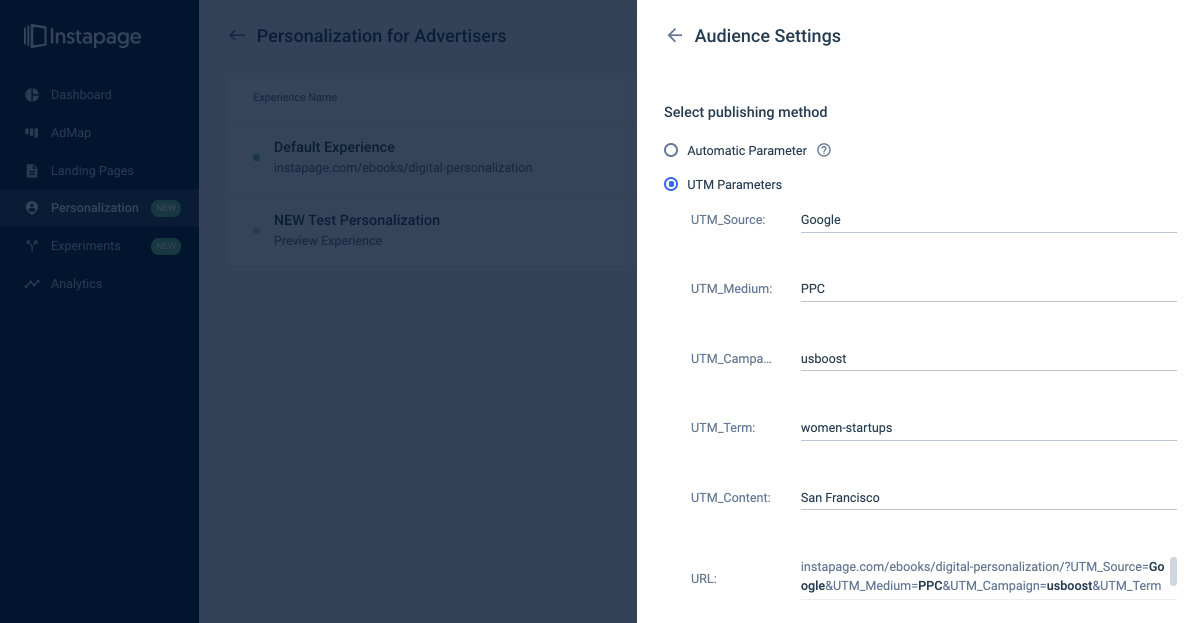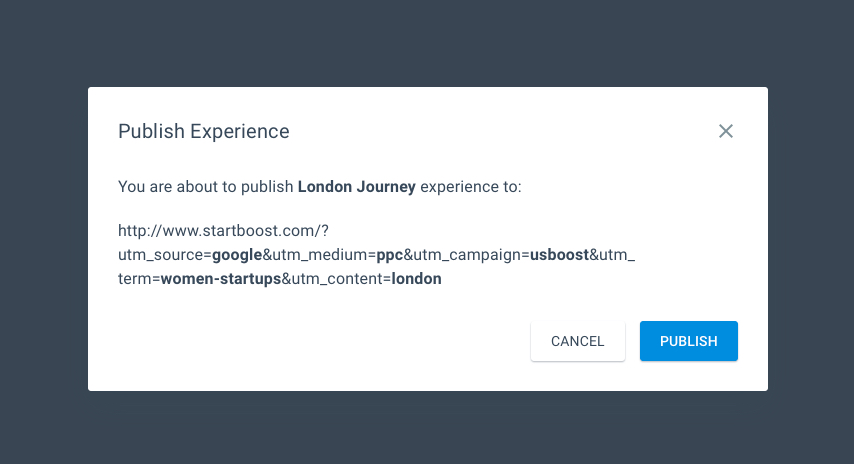Ad tracking is the most effective way to measure campaign performance. Whether through Google or Facebook, mobile or desktop, search or display, methods of ad tracking like UTM parameters are what advertisers use to uncover better, more profitable campaigns.
What is ad tracking?
Ad tracking refers to the process of using data to measure ad performance. Clicks, impressions, conversions, and more, can be measured in several ways, with URLs, cookies, and even invisible images called “pixels”:

Though ad tracking is sometimes considered “creepy” because it involves certain levels of user behavior tracking, it’s certainly legal. However, it’s more highly regulated than it once was due to increasing concerns over user privacy.
The General Data Protection Regulation (GDPR) was the first to designate cookies as personal information. It paved the way for similar legislation from different governing bodies worldwide. Now, advertisers must adhere to strict rules when they collect user behavior for ad tracking or risk serious financial penalties.
Types of ad tracking
Ad tracking is a broad term. And though there are lots of tools and platforms for tracking ads, most methods include the following.
Tracking URLs
A tracking URL is a URL to a page on your site with a tracking tag on the end of it. The only difference between a tracking URL and a normal URL is the code placed at the end. For example, here’s a URL created with the UTM generator in Instapage:

When someone visits this URL, it tells analytics software about the visitor: they came from a Google PPC ad for the keyword “women startups,” the campaign is named “usboost,” and the content displayed on the page is personalized for London.
This method is best for:
This type of tracking is useful for PPC, email, and ad campaigns on other websites. They help you determine who makes up your most profitable audiences.
Tracking pixels
Tracking pixels are small, often 1×1 transparent images, that are placed over ads, in emails, or on web pages. When these pixels load, they tell analytics platforms that the ad, email, or page has been viewed.
This method is best for:
Tracking pixels can be particularly helpful when you’re trying to determine the effectiveness of a particular campaign. For example, if an advertiser places a pixel over an ad, and the pixel loads more than the ad generates traffic, the advertiser can determine how many times the ad has been seen vs. clicked.
This might communicate to the advertiser that they need to change creative, targeting, platform, or several other parameters that affect campaign success.
Cookies
Cookies are browser files that store user information like behavior, preferences, location, etc. When used ineffectively, delivering advertising with cookies can be perceived as creepy. At worst, it can be illegal if you don’t use it the right way.
However, used effectively, they can be a valuable asset to both advertisers and users. Advertisers can use cookies to build personalized profiles on their visitors. And when that happens, visitors get more relevant content.
This method is best for:
Cookies, for example, are key in the delivery of personalized retargeting ads for offers a visitor has seen but not claimed. These can appear on social media platforms like Facebook or even across ad networks like Google Display.
What are the benefits of ad tracking?
The immediate benefits of ad tracking are pretty clear. They allow you to understand the performance of your ad campaigns. What may be less clear, however, are the major benefits that come with understanding your audience.
- Understand your audience: Ad tracking helps you understand your audience. What do they respond to? Where are they coming from? What keywords do they use to find your business? Answering questions like these is the first step to more revenue.
- Optimize your campaigns: When you know what your audience responds to, you can shift your advertising dollars to more profitable campaigns, and optimize existing ones to better speak to your customer segments.
- Personalize your content: When you know which campaigns work best on your audience, you can make better budgetary decisions, but also better decisions on campaign content. The more ad tracking data you collect, the more you’ll learn about your audience, and the more you can tailor your messaging, offers, channels, and more, to better serve them.
- Boost conversions: Personalized content is valuable because it provides a high level of relevance. When campaigns are more relevant to your audiences, they’re more likely to generate a positive response. For you, that means more conversions and revenue.
Ad tracking across platforms
Most networks and platforms employ variations of the ad tracking methods listed above. On the two biggest ad platforms, Facebook and Google, here’s the kind of ad tracking you can expect:
The most popular type of ad tracking native to Facebook is done with the Meta pixel. With code implanted on a campaign landing page, you can use the pixel track Facebook campaigns in your Ads Manager.
More than simple impressions and clicks, Facebook allows you to track all kinds of actions that users might take on your web pages. That includes downloads, purchases, signups, and more.
According to Facebook, tracking with the Meta pixel comes with four significant benefits:
![]()
Implanting the pixel on key campaign landing pages can offer insight into Facebook ad performance across channel, campaign goal, creative, and more. It can also help with the delivery of dynamic ads that adjust based on viewer behavior. And it will even optimize your campaigns automatically to serve the experiences most likely to result in your chosen goal.
Though the Meta pixel is unique to Facebook, you can also track with your own outside UTM parameters. In Facebook’s Ads Manager, there’s a spot for you to add your UTM codes should you want to narrow your tracking further.
Similar to Facebook, Google allows for the tracking of various actions, like app installs, purchases, and even phone calls. In Google Ads Manager, you can track these metrics and more by setting up conversion tracking on your web pages. Some other metrics you can track:
- Impressions: See how often any version of your ad has been viewed.
- Clicks: See how often any ad version was clicked.
- Call clicks: See the number of times potential customers tapped the “Call” button in your ad from mobile devices.
- Verified calls: See how often you received calls to the Google forwarding number in any version of the ad.
- Map actions: Track the number of times people saw your ad and then clicked your business’ pin on Google Maps or got directions to your business.
- Analytics goals: By linking your Google Analytics and Google Ads accounts, you can use tracking IDs and tags to monitor traffic from your ads.
- Amount spent: See how much your campaign has spent.
To track and serve advertising, Google has committed to using only first-party tracking cookies in its browser, Chrome. Third-party tracking cookies, which rely on potentially insecure methods of data transmission, are the ones most likely to compromise user privacy.
In addition to tracking cookies, Google also allows advertisers to use UTM parameters in their campaign setup.
Use ad tracking and PCA for your most profitable campaigns
Alone, ad tracking is a powerful way to understand your audience and generate more conversions. When it’s combined with Post-Click Automation (PCA), ad tracking can reveal granular insights into segments and campaigns that you’ve probably never considered. Then, PCA can enable you to act on those insights with solutions for scaling personalization unrivaled by any other platform.
Learn more about how to hyper-personalize your campaigns at scale sign up for an Instapage 14-day free trial today.

Try the world's most advanced landing page platform with a risk-free trial.